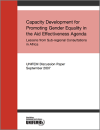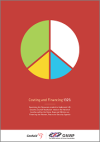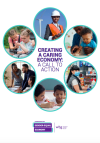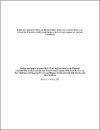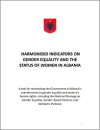أسس 120
This booklet was commissioned by the Southern African Regional Office (SARO) of the United Nations Development Fund for Women (UNIFEM). UNIFEM has been supporting GRB work in the region for many years. It sees this booklet as yet another way in which it can link the work on GRB and rights.
Systematization of the project, "Gender Equity: Citizenship, Labor and Family and Fundar". The assessment was carried out in conjunction with the Ministry of Health, as part of a reflection process for introducing a gender perspective into the planning and budgeting of the health sector in Mexico.
This discussion paper was prepared following UNIFEM's sub-regional Consultations on gender equality and aid effectiveness held in various countries in Africa in 2006-2007 (Burundi in July 2006, Djibouti in November 2006, Ghana in November 2006 and Zambia in July 2007).
Examining the resources needed to implement Security Council Resolution 1325 at national level as well as the gains, gaps and glitches of financing the women peace and security agenda. Over the last decade the policy environment on women, peace and security has gained significant momentum.
This is an extensive summary of a report published in Swedish in December 2006, which was produced and written mainly by Elis Envall, Senior Advisor and Annika Eriksson, PhD at the National Board of Health and Welfare, Sweden.
The final report of the Commission on a Gender-Equal Economy has been released at a unique moment in global history.
The final report of the Commission on a Gender-Equal Economy has been released at a unique moment in global history.
This background paper was prepared by ECLAC and presented at the Regional Consultations on the Economic and Social Council Annual Ministerial Review on Key Challenges of Financing Poverty and Hunger Eradication in Latin America and the Caribbean, held in Brazil, 17-18 May 2007.
This briefing paper highlights main concerns and opportunities that increased general budget support present for gender equity work in EU partner countries.
This analysis provides a ground-breaking look into the gender dimensions of the emerging climate finance architecture and highlights opportunities for more gender responsive investments in national climate and development strategies.

